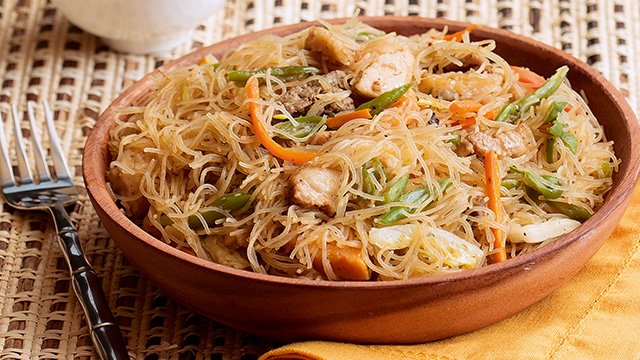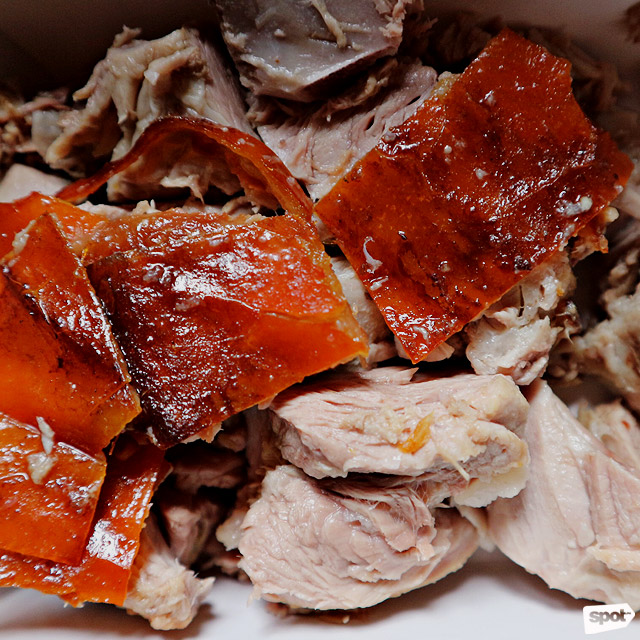Every year, people in the U.S. celebrate New Year’s Eve by popping champagne and waiting until the clock strikes midnight (some even kissing to celebrate the New Year to come). Being from New York, a big part of New Year revolves around watching the ball drop in the Times Square, either on TV or in person. However, being Filipino- American, we do add some twist to this event, brought on by the culture.

Disclaimer: This is not a representation of EVERY Filipino- American New Year’s Eve Party. Some may be more traditional or less. But whatever degree of traditional it may be, I found that the food ALWAYS stays the same.
Since we already mentioned food, might as well start with that...
1) FOOD:
There are some filipino dishes that are just seen as a necessity to eat during New Year’s, being that it’s tied to some superstitions relating to longer life or good luck. Some of these are:
PANCIT BIHON

This noodle dish contains veggies, meat, and seafood (shrimp). Other than being a tasty dish, this is eaten because of the belief that it brings longer life.
STICKY RICE
Stick Rice Cake, aka Biko, is a glutinous rice dessert served so that good luck would stick (sticky=stick) for the following year to come.
ROUND FRUITS

12 round fruits are served, although not eaten, in order to bring good luck. 1 fruit equates to 1 month. Therefore, 12 round fruits at midnight should bring luck for the whole year.
Some dishes, however, are served just because they are crowd- favorites. If these aren’t in the table, then is it even a Filipino party?:
FILIPINO SPRING ROLLS

Also known as Lumpiang Shanghai, these spring rolls are filled with sautéed ground pork, minced veggies (onion, carrots) and spices, sometimes mixed with beaten egg used to hold all the fillings together.
ROASTED PIG
Known in the Philippines as Lechon Baboy, this roast pig is served in many events/ parties, not just the New Year’s. I mean, look at it:

Need I say more?
2) LOUD NOISE:

In the Philippines, each household uses firecrackers all night long (even after midnight). This stems from the superstitious belief that the loud noise will drive away any bad luck. However, due to fireworks being heavily regulated in the US, we are unable to do this. To make up for it, we use little party horns and party poppers after the ball drops in Times Square. Although, admittedly, it does not have the same effect, we try to make do with what we have.
For reference, below is a video of NYE in Metro Manila:
Metro Manila, Philippines NYE Fireworks
3) PARLOUR GAMES:
And now we’re in our last section, which are the parlour games. Last year, a few of our party games consisted of the following:
OVEN MITT UNWRAP
This game consists of people surrounding a heavily wrapped gift box filled with money. With music playing in the background, people in the game try to be the last one who unwrap the gift box in order to gain the prize. It passes on to the next person after that person is able to roll a double (dice doubles). Sounds easy enough? Well, here’s the catch. Try opening it with oven mittens on. Yeah, it makes for an interesting and rowdy party game.
For a more detailed explanation, view the link below:
POPPING BALLOONS
These are usually set up for the younger crowd. We pop as much balloons as we could (these balloons are filled with money of random values: Surprise?). Whoever gets the most money takes home every single dollar, even the ones collected by their competition. Totally unrelated topic, but I lost 2 years ago in this game because of a "whopping" $1.00.
MONEY IN A BOWL
You have probably seen this in Facebook or instagram last year, but this is when children reach in a bowl with their eyes blindfolded to grab cash. The value of the cash can vary from 20 PHP to 50 USD.
From the pancit and the round fruits influenced by the Chinese traders way back when, to the roasted pig which originated in Spain. And now, watching the ball drop in Times Square through the television. All-in-all, a Filipino-American’s New Year’s Eve is celebrated in a way that fuses all the cultures that influence where and what we are now today.
















